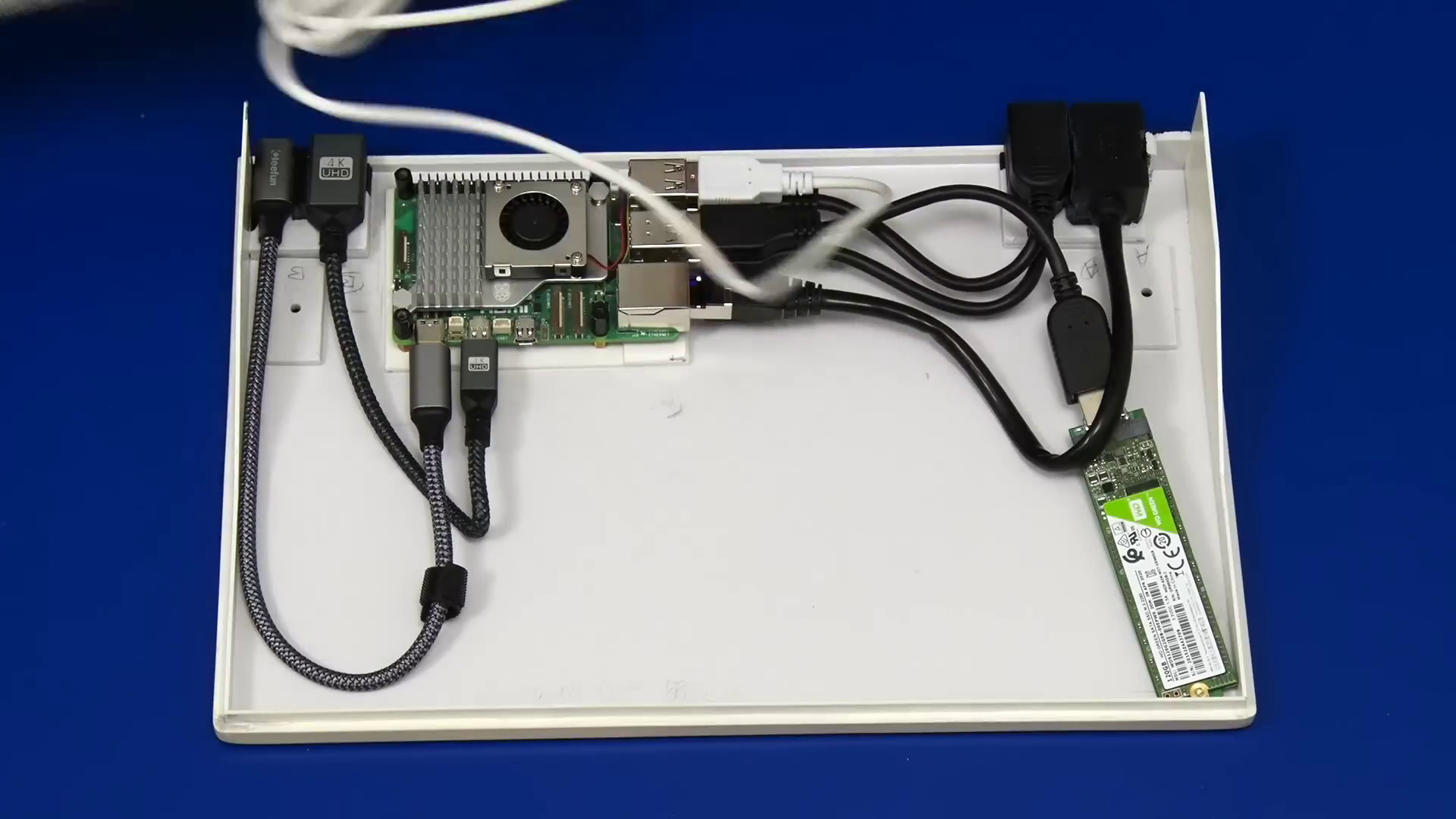Maker can't wait for Raspberry Pi 500, so makes their own!
Classic Amiga beige

The Raspberry Pi 5 has barely been on the scene for two months and makers are already looking for their next slice of Raspberry Pi. YouTuber Explaining Computers has built what they consider to be the Pi 500, a Raspberry Pi 5 based version of the Raspberry Pi 400.
Explaining Computers is the channel name for Christopher Barnatt a freelance academic with 25 years experience of lecturing at Nottingham University's Business School. Barnett is a leading name in the Raspberry Pi community.
We don't know of an impending Raspberry Pi 500 launch. The Raspberry Pi 400 caught everyone off-guard. A break from the Raspberry Pi form factor, the Raspberry Pi 400 is a keyboard based compute. A design popularized by the home computers of the late 20th century, for example Commodore's Amiga, Atari and early Apple computers.
Barnatt's project involves a Raspberry Pi 5, a chiclet keyboard (we don't think it will make our list of best keyboards) and a SATA SSD connected via a USB to M.2 SATA adapter. Barnatt mentions that the build may use the upcoming M.2 HAT once it is released.




The Raspberry Pi 5 is buried deep within the case, but Barnatt has a plethora of ports broken out to the back of the case thanks to a series of extension cables. Including a full size HDMI port. The Raspberry Pi 5 can be removed from the case, a fact that Barnatt highlights early in the video. This means that it can be replaced for another model of Raspberry Pi.
How did Barnatt construct the case? Using the best 3D printer or laser cutter? Nope. Barnatt went old school using the ABS plastic sheet, better known as Plasticard. Yes the age old model making material, used to construct Star Destroyers, rebel bases and architectural models was chosen as the material for the case. Plasticard is easy to cut, just score and then "snap" to produce a clean and sharp edge. Barnatt took his measurements and went to work.
Using lots of plasticard and model filler, Barnatt integrated the keyboard into the case and then performed a fit test. Routing the cables and holding them in place to get a feel for how the project will look in the final build. Barnatt's clever idea of using plasticard shims to raise the USB, Ethernet and HDMI ports is something that we shall use in a future project.
Get Tom's Hardware's best news and in-depth reviews, straight to your inbox.
The final part of the project is where the case gets its color. Barnatt elected for a beige color, similar to the Amiga 500 and Apple II. We hope that the build won't need "retro-brighting" for many years to come. Unlike many Amiga 500s (ours included).
Barnatt has released the build instructions via the Community section of his YouTube channel.

Les Pounder is an associate editor at Tom's Hardware. He is a creative technologist and for seven years has created projects to educate and inspire minds both young and old. He has worked with the Raspberry Pi Foundation to write and deliver their teacher training program "Picademy".
-
RaunchyButts If they ever do make an official one, let's hope they don't repeat the blunder of putting micro-HDMI ports on it. Putting them on the Pi 5 itself was bad enough.Reply -
edzieba Reply
'Their' is both a singular and plural pronoun.RaunchyButts said:BTW, it's "makes his own." There's only one maker involved here. -
KyaraM Reply
Some people prefer the gender-neutral 'they/them' over gendered pronouns, you know. It's always good practice to default to they/them if you don't know the other person's gender, too, which is most of the time online. So yes, they is very appropriate here.RaunchyButts said:BTW, it's "makes his own." There's only one maker involved here.